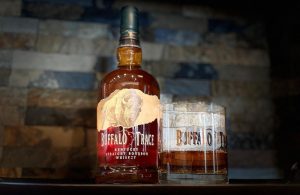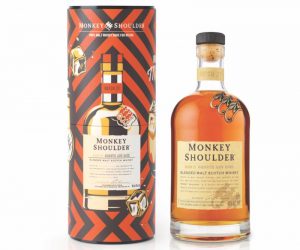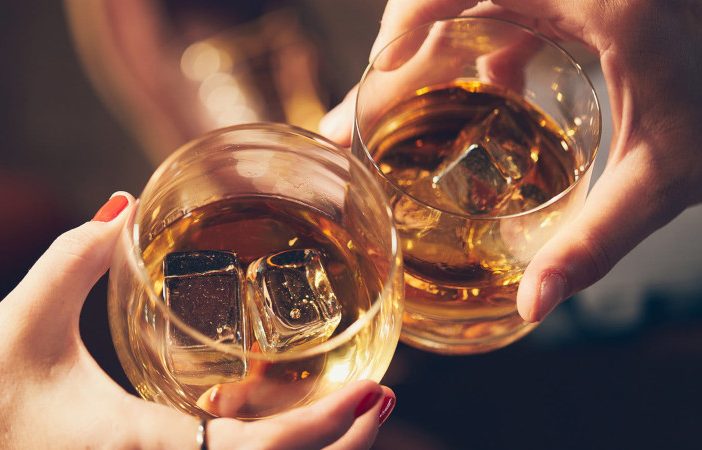Whisky comes out with all the bells and whistles over the festive season with gift packs galore and huge displays in every liquor store. But, it can all be a little overwhelming! Rather than heading straight past it to the beers at the back, here’s a guide to deciphering the labels so that you can make an educated decision when you buy a bottle of the good stuff, whether it’s for a gift or simply to say cheers to surviving a challenging year.
Whisky is fascinating because of the craftmanship that goes into it and then the impact of where it’s made on the liquid itself — this is often called the whisky’s provenance. There are a number of whisky-producing countries including Scotland, Ireland, America and Japan, each with its own flavour profile and style.

Japanese whisky
Japanese whisky is increasingly hard to come by for the same reasons as bourbon (made in America) — it’s in high demand and years ago, when the whisky was laid down to mature, no-one could’ve predicted its global popularity.
American bourbon

There are some excellent bourbons available in South Africa. Bourbon is more accessibly priced and sweeter in flavour than Scotch whisky, making it approachable for curious new whisky drinkers. Buffalo Trace Kentucky Straight Bourbon has a classic bourbon flavour profile (think brown sugar, toffee and vanilla) and it’s made at the world’s most awarded distillery and also one of America’s oldest, dating back to 1773. If sipping it neat seems too much, bourbon is great in cocktails (think Old Fashioned or a Mint Julep).
Find the best prices on bourbon whisky online with PriceCheck now:
Irish whiskey
Another country known for its whiskey-making prowess is Ireland. Irish whiskey (yes, it’s spelt with an ‘e’ if it’s Irish) is typically triple-distilled and unpeated, making it smooth and easy-drinking although not as sweet as bourbon. Paddy Irish Whiskey is blended with triple distilled pot still, malt (barley) and grain whiskeys and is a classic example.

Scotch whisky
Scotch whisky, loved by traditionalists, is known for its complexity and layers of flavour, starting with the nose (what it smells like), the palate (what it tastes like), the mouthfeel and the finish (or aftertaste). Knowing what flavours and aromas to look out for is part of appreciating it.
Try something like Monkey Shoulder Blended Scotch Whisky, 100% malt whisky. To make this unique whisky, small batches of different Speyside single malts are expertly blended then married together, making it a whisky made for mixing. Richness and vibrant combine fruity aromas and mellow vanilla notes, for an unconventional flavour that that is bound to appeal to a new generation of whisky drinkers.

Blends vs single malt
The general sentiment is that single malts are more complex, and therefore more difficult to appreciate than blends. A single malt is a whisky that has been made from 100% malted barley at only one distillery, while blended whisky is made from combining single grain and single malt whiskies from multiple distilleries.
Blends are often more approachable than single malts as Master Blenders are experts at balancing flavours to ensure a delicious end product. Worldwide cask finishes are trending.

The finish
A ‘cask finish’ means that the whisky matures in casks that were previously used for other alcohol, like sherry, port, rum and bourbon. Whisky matured in ex-bourbon and ex-sherry casks is naturally sweeter and easy-drinking, like Bannerman’s Blended Scotch Whisky which is smooth, round and boldly-favoured.
Aged whisky
Then there’s the whisky’s age. To be called whisky, the liquid must have matured in oak barrels for three years or more, so many blends are made with young whiskies of the requisite three years. The label may only state the age of the youngest whisky in the bottle, so it’s a good idea to look out for a whisky that contains slightly older liquid as it’s then been matured for longer. For example, Bannermans whisky is a blend that has been blended using malts older than 5 years.

The Sexton Irish Single Malt Whiskey is an interesting one as it has all the complexity of a single malt (made with only malted barley at one distillery), and the single malt’s oakiness is beautifully balanced with classically Irish sweetness, making it delicious neat or in a cocktail.
With so many whiskies (and whiskeys) to choose from, all of which offer a distinctly different drinking experience, there’s no reason not to give at least one a try this festive season. The best way to find a whisky you like is to taste them all. Exploration is the easiest way to determine your preferences when it comes to drinking whisky.
Find the best prices on whisky online with PriceCheck now:





